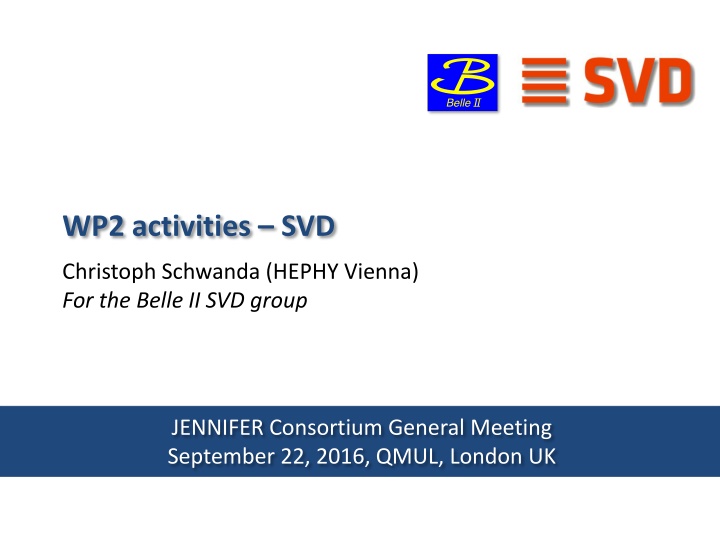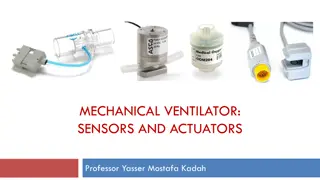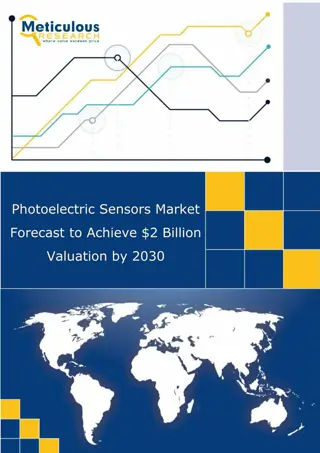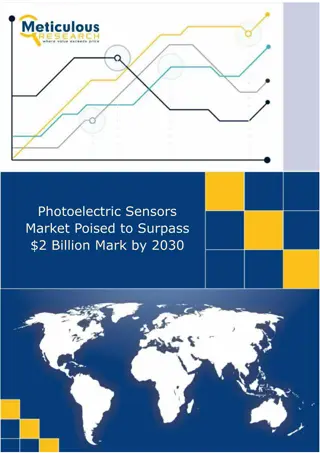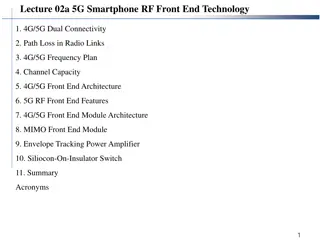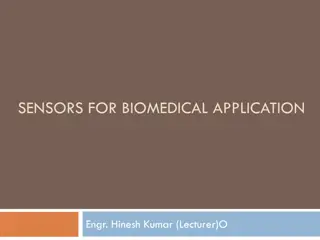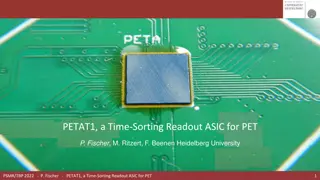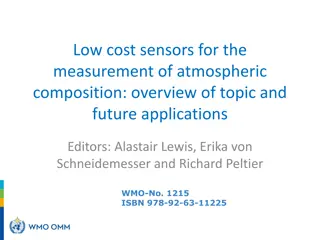Belle II SVD Silicon Sensors & Front-End Readout
This content discusses the components, requirements, and technology used in the Belle II Silicon Vertex Detector (SVD), including details about the silicon sensors, front-end readout ASIC (such as the APV25 chip), and the chip-on-sensor concept.
Download Presentation

Please find below an Image/Link to download the presentation.
The content on the website is provided AS IS for your information and personal use only. It may not be sold, licensed, or shared on other websites without obtaining consent from the author.If you encounter any issues during the download, it is possible that the publisher has removed the file from their server.
You are allowed to download the files provided on this website for personal or commercial use, subject to the condition that they are used lawfully. All files are the property of their respective owners.
The content on the website is provided AS IS for your information and personal use only. It may not be sold, licensed, or shared on other websites without obtaining consent from the author.
E N D
Presentation Transcript
WP2 activities SVD Christoph Schwanda (HEPHY Vienna) For the Belle II SVD group JENNIFER Consortium General Meeting September 22, 2016, QMUL, London UK
VXD requirements Components of the Belle II SVD Fast to operate in high background environment Better resolution at IP to compensate reduction of boost wrt. Belle I Radiation hard (up to 100 kGy) Self-tracking capable to track particles down to 50 MeV in pT Outer CF shell Carbon fiber (CF) cone End flange End rings Ladders Beam pipe PXD (independent sub-detector inside SVD) 2
Layer Ladders (spares) DSSDs / ladder SVD ladders 6 16 (4) 5 5 12 (3) 4 L6 Ladder (Kavli IPMU) 4 10 (2) 3 FWD module 3 7 (2) 2 FWD Origami +z L5 Ladder (HEPHY) Origami ce 47 FW/BW + spares (4) BWD Origami -z L4 Ladder (TIFR) BWD module L3 Ladder (Melbourne) Cooling pipe FWD module (Pisa) Cooling pipe BWD module (Pisa) Cooling pipe 3
SVD silicon sensors Rectangular sensor (HPK) DSSD (Double-sided Si strip detector) thickness: 320mm Sensor thickness = 300-320 m Trapezoidal sensor (Micron) Strip numbers and pitches 3 types of DSSD sensors Rectangula r (Small) Rectangular (Large) Sensors Trapezoidal # of p-strips 768 768 768 p-strip pitch 75 m 50 m 50 75 m thickness: 300mm # of n-strips 512 768 512 n-strip pitch 240 m 160 m 240 m 4
APV25 front end readout ASIC APV25 chip Specifications # of input channels: 128 ch. shaping time: 50nsec radiation hardness: > 1MGy max heat dissipation: 0.4W necessity of cooling Within acceptance thinned to 100 m for reduction of the material budget APV25 chips in ladder APV25 APV25 APV25 APV25 5
chip on sensor concept ORIGAMI flex (Si sensor is under the flex) Sensor under ORIGAMI (n-strips) n-strip signals APV25 APV25 APV25 flip Sensor from other side (p-strips) n-strip signals p-strip signals p-strip signals p-strip signals Flex circuit (ORIGAMI flex) is glued onto sensor n-side on an isolation foam APVs are placed directly onto the ORIGAMI flex to minimize the analog path length (capacitive noise) Sensor strips and ORIGAMI flex are connected with Al wire-bonding ( 25mm). Wire bonding with Al wires. 6
CO2 ladder cooling Cooling pipes attached on ladders CO2 cooling pipe in final setup (CAD) cooling pipe Softtherm APV25 chips 2-phase (liquid and gas mixture) CO2 cooling system Efficient and low mass cooling Simple control of coolant temperature (only with pressure) Small pressure loss in the pipe Thin stainless tube (OD:1.6mm, thickness:0.1mm) used to minimize material Softtherm 86/125 thermal-conductive dielectric pad. 7
Distributed SVD assembly @HEPHY (Austria): Layer-5 assembly @Kavli IPMU (Japan): Layer-6 assembly Layer-4 assembly by TIFR Assembled Layer-5 ladders to KEK FW/BW DSSDs to HEPHY @KEK (Japan): SVD assembly SVD installation @Univ. of Pisa (Italy): FW and BW DSSD assembly TIFR (India) Assembly sites are reviewed by the SVD QC group to guarantee compliance of the local production All parts (quality grade, location) are tracked in a construction data base @Univ. of Melbourne (Australia): Layer-3 assembly 8
Ladder quality assurance 1. Mechanical precision measurement with CMM Control reference point possitions on DSSD sensors in 3-dimensions I-V curve 2. I-V curve measurement Confirm the sensor functionality for biasing. 3. -source (Sr90)/laser measurement Hit map Noise map Cluster size distribution S/N ratio distribution 9
Ladder production status BW FW Now all the ladder assembly sites are in mass-production stage FW/BW DSSD BW: 100% completed FW: 93% completed Layer-3 Ladder 5 out of 7+2 ladders (56%) completed Layer-4 Ladder 3 out of 10+2 ladders (25%) completed Layer-5 Ladder 4 out of 12+3 ladders (27%) completed Layer-6 Ladder 3 out of 16+4 ladders (15%) completed Layer-3 Layer-4 Layer-5 Completion of the ladder production by Nov. 2017 is expected Layer-6 10
SVD assembly at KEK SVD assembly at KEK is the final step to complete construction of SVD Prototypes of all mount tools are available We will finalize the tools by February 2017 Ladder mount tool CO2 pipe attachment tool Softtherm attachment tool 11
Beam test at DESY in April 2016 SVD ladders Solenoid magnet SVD+PXD in the box PXD e- beam SVD + PXD detector setup Apr 2016 2-5 GeV/c e-beam at DESY Simultaneous operation of SVD layers L3 to L6 SVD + PXD combined setup Beam test setup (@ DESY T24/1 hall) 12
Ladder Performance for Tracking (DESY results) Tracking event display Residual distribution SVD ladders Layer-3 n-strips Layer-3 p-strips preliminary preliminary reconstructed track Consistent with expectation Excellent SVD performance was confirmed during the April 2016 testbeam @ DESY DSSD hit inefficiency (= 1-efficiency) Layer-5 p-strips Layer-5 n-strips preliminary preliminary Single hit efficiencies above 99% 13
Summary SVD ladder construction is now in full swing Expect to finish by November 2017 SVD assembly at KEK Procedures are now being finalized Final assembly at KEK will start in February 2017 SVD will be ready for integration with PXD by the end of 2017 Full BEAST phase 2 geometry has been successfully tested in DESY in April 2016 14
BACKUP 15
Ladder Anatomy (L6 ladder) DSSDs 2 small rectangular (L3) 2-4 large rectangular (L4-6) 1 trapezoidal (L4-6) Origami hybrid APV25 Origami hybrid Flexible circuit to transmit detector signals to the ladder ends APV25 Readout ASIC of the strips PA0 PF2 FlexPA (PA/PF/PB) Flexible circuit to transmit detector signals to the APV25 PF1 AIREX PB2 PA1 PA2 PA0 Flexible circuit glued on the Origami hybrid to transmit n-side detector signals to the APV25 DSSD PB1 AIREX Thermal insulator between the DSSD and APV25 Rib 16
Ladder production schedule End of L3 production: Sep 2016 End of L6 production: Nov 2017 17
